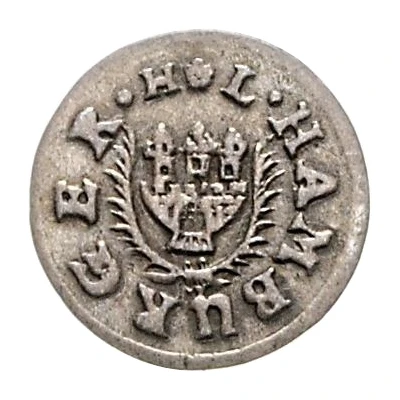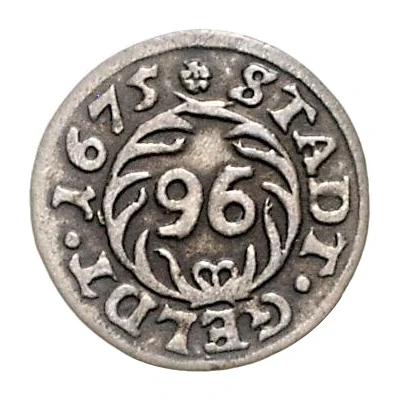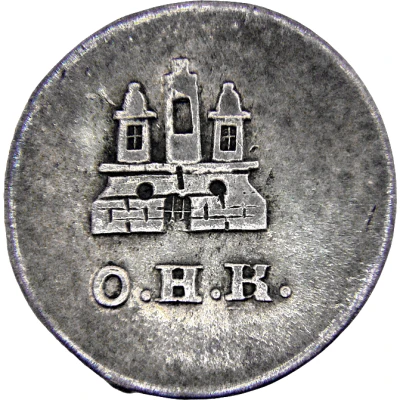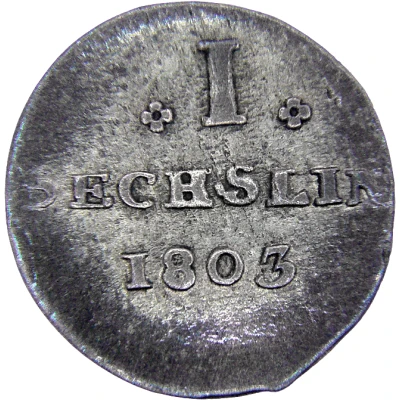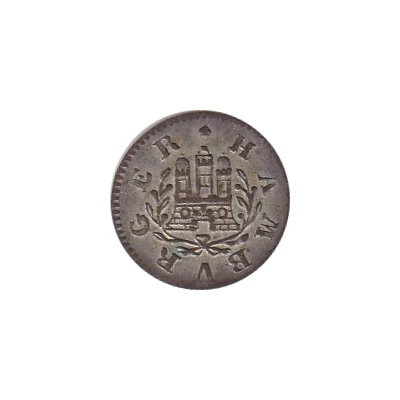
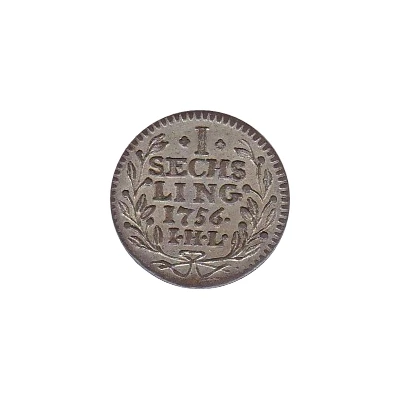

1 Sechsling
| Billon (.250 silver) | 0.7 g | 15 mm |
| Issuer | Free Hanseatic city of Hamburg (German States) |
|---|---|
| Period | Free Hanseatic City (1324-1922) |
| Type | Standard circulation coin |
| Years | 1726-1764 |
| Value | 1 Sechsling = 6 Pfennig (1⁄96) |
| Currency | Thaler (1675-1872) |
| Composition | Billon (.250 silver) |
| Weight | 0.7 g |
| Diameter | 15 mm |
| Shape | Round |
| Orientation | Medal alignment ↑↑ |
| Demonetized | Yes |
| Updated | 2024-10-05 |
| Numista | N#89687 |
|---|---|
| Rarity index | 67% |
Reverse
5-line inscription with date and denomination within laurel wreath.
Script: Latin
Lettering:
* I *
SECHSLING
1751
IHL
Engraver: Johann Hinrich Lowe
Interesting fact
One interesting fact about the 1 Sechsling coin from the Free Hanseatic city of Hamburg (German States) is that it was made of Billon, which is an alloy of silver and other metals, specifically copper, tin, and sometimes lead. The use of Billon in coinage was common in Europe during the 18th century, as it allowed for the production of coins with a lower silver content, making them more affordable to produce and circulate. The 1 Sechsling coin, in particular, had a silver content of .250, which is relatively low compared to other coins of the time. This makes it an interesting example of how different materials were used in coinage during this period.
Price
| Date | Mintage | VG | F | VF | XF | AU | UNC |
|---|---|---|---|---|---|---|---|
| 1726 IHL | 336000 | - | - | - | - | - | - |
| 1727 IHL | 146000 | - | - | - | - | - | - |
| 1731 IHL | 105000 | - | - | - | - | - | - |
| 1752 IHL | 205000 | - | - | - | - | - | - |
| 1756 IHL | 244000 | - | - | - | - | - | - |
| 1757 IHL | 150000 | - | - | - | - | - | - |
Values in the table are based on evaluations by sales realized on Internet platforms. They serve as an indication only for 1 Sechsling 1726-1764 coin.
